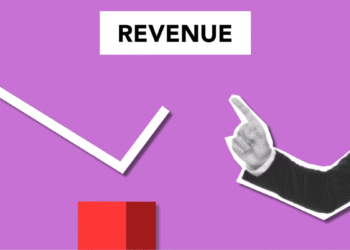Whew. Nothing used to ruin my day faster than waking up to a negative review.
I remember the first time I got one, it was on a course I’d poured my soul into. The reviewer said it was “overhyped” and “a waste of money.” My heart dropped. I literally sat there staring at my laptop, wondering if I should just delete everything and crawl into a hole.
But here’s the thing I’ve learned after a few years in the game: negative reviews aren’t the end of the world. In fact, they’re kind of… useful. Yeah, they sting. But handled the right way, they can actually make your brand stronger and your content better.
Let me walk you through how I deal with them now, without losing my mind or my reputation.
1. Breathe First, Respond Later
First rule? Don’t react emotionally. Trust me, I’ve typed out angry replies I thankfully never sent.
These days, I wait a few hours (or a whole day) before I respond. I ask myself:
-
Is this a legit issue?
-
Is there something I can learn here?
-
Are they just having a bad day?
If I still feel triggered, I’ll write the response in a doc and come back to it later with fresh eyes.
By the way, if you’re worried about getting too many bad ones too fast, it might be time to look into automating review requests via email so you’re consistently bringing in a variety of perspectives—including the good stuff.
2. Acknowledge, Don’t Argue
One of the worst things you can do is get defensive. It makes you look small, even if you’re 100% right.
Instead, I usually respond with something like:
“Hey [Name], I’m really sorry this didn’t meet your expectations. I appreciate the feedback and I’ll definitely take it into account moving forward.”
Short. Calm. Professional. No sarcasm, no excuses.
Most people don’t expect you to be perfect—they just want to be heard. A respectful reply often softens even the harshest critic. If you want more inspiration on how to do this well, I highly recommend checking out responding to customer reviews to build engagement. It’s packed with actionable advice.
3. Take the Conversation Offline (When You Can)
If it’s a product or service complaint, I try to move the convo off the public stage. I’ll say:
“I’d love to make this right. Can you shoot me an email at [email]? Let’s sort this out.”
This does two things:
-
Shows others you care enough to fix it
-
Stops the review thread from turning into a circus
I’ve had people edit their reviews after we handled things privately. One even became a loyal customer after we cleared the air.
But be cautious—sometimes what seems like a genuine complaint could be spam. I learned this the hard way until I read managing fake or spam reviews, which helped me separate the noise from the real feedback.
4. Use the Feedback to Improve
Some negative reviews are just people venting. But others? They’re straight-up gold.
A reviewer once complained about my site being hard to navigate. I brushed it off… until I asked a few friends to test it. Turns out, my navigation sucked. Fixed it, and bounce rates dropped by 20%.
Now I track recurring complaints in a spreadsheet:
-
Product bugs
-
Content clarity issues
-
Missing features
If something shows up twice, I flag it. If it shows up three times? I fix it.
Want to turn that negative into a positive? Start using reviews in paid advertising campaigns. Even skeptical feedback can add authenticity to your brand messaging.
5. Don’t Let the Fear Stop You
Honestly, the fear of bad reviews used to keep me from launching stuff. I’d obsess over every little thing, trying to make it perfect.
But here’s what I figured out: if no one’s criticizing you, you’re probably not doing anything bold enough to matter.
Even Amazon’s best-selling books have 1-star reviews. The difference is, those creators put themselves out there. They kept going.
And if you’re still doubting the power of feedback, go read why customer reviews matter for online sales. It’ll remind you how vital real voices—good or bad—are for building trust.
So now, every time I get a bad review, I tell myself:
“Cool. That means I’m growing.”
(Still hurts a little. But it helps.)
Final Thought
Handling negative reviews isn’t about swallowing your pride or pretending they don’t hurt. It’s about staying grounded, staying respectful, and using feedback like fuel.
Because the truth is? You can’t control what people say—but you can control how you show up.
And the way you handle criticism? That tells your audience way more about you than a hundred glowing reviews ever could.








